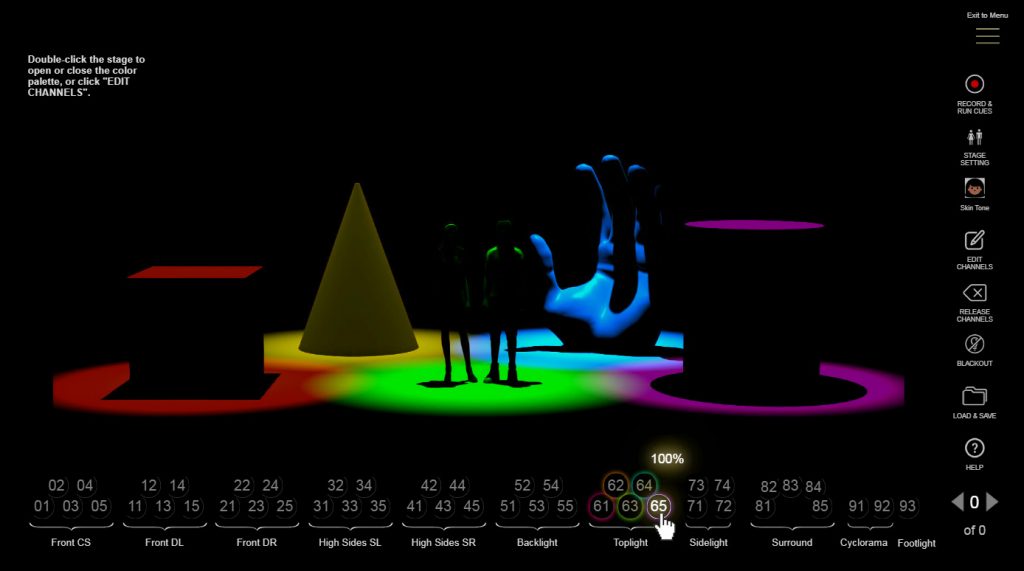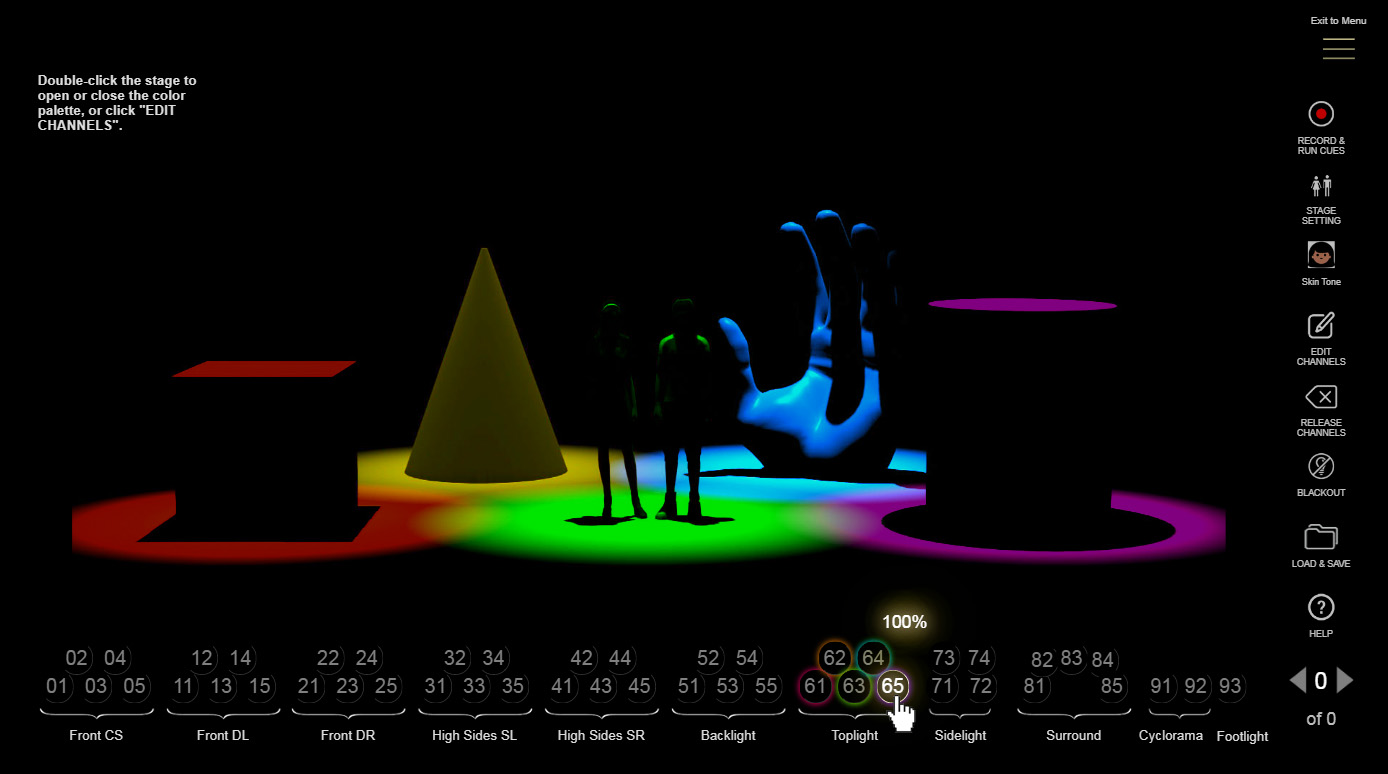
Ready-Made Exercises
Theatre design and technology is best learned by doing. These exercises are ready to be used by anyone interested in learning about what light can do to create art and drama in three-dimensional stage space. The exercises can be executed in any order. Different institutions, designers, and students can use these to serve their own learning agendas.
There are several ways you can submit work. Read more here.
#1 Cuing with Music
This includes eleven potential tasks.
Choose from one of eleven pieces of music included. The music is embedded and is ready to play at the link below. Each bas a specific set of cues requested: Music Selections & Cue Requirements These are all short scene-transitions with the accompanying music. All music is by Kevin MacCleod.
| 1..1 Passage | 1.2 Stained Glass | 1.3 Top of Show | 1.4 Set Change |
| 1.5 Macabre | 1.6 Grand Entrance | 1.7. Journey | 1.8 Festive |
| 1.9 Mystery | 1.10 Romance | 1.11 Seasons |
#2 Light Cues for a Scene
There are scenes and full scripts available for your convenience, or choose any other work that provides inspiration. The titles available here might be of interest: Short Plays and Scenes
Choose a setting that will serve the scene in an interesting way. Write lighting cues that support concepts of character, dramatic action, setting, and time. Artistic style and flair are always important.
#3 Understanding the Plot
This exercise includes both writing and cuing.
- Explain the breakdown of numbers in this plot for channels. Specific numbers are being used to control specific lights. It’s not random, but it’s also not just numbered from left-to-right. What is the system being used?
- Is it easy to use and understand? Could there be a better way to number the lights? There is not a right or wrong answer to this.
- If we had more areas on stage, how could we number them differently? What if there were fifty areas on the stage, with hundreds of lights?
- Is it better to number them from stage-left to stage-right, or the opposite? What about downstage to upstage? Some designers prefer one system over another. Why might that be?
- Write a sequence of 25 cues that lights up the areas in sequence, while following a very specific color order. Do not use the same channel twice. Colors will repeat, but you may choose your own sequence.
#4 Controlling Spaces
- Choose either “open stage with more actors” or “abstract shapes” as your stage environment.
- Write a series of four cues that switch back and forth between areas on opposite sides of the stage.
- Make the cues for these two areas that look the same in regard to color, texture, time of day, season, etc. It should be obvious that the setting and time and situation is the same, even though the two areas are on opposite sides of the stage. Two separate areas, but showing the same locale at the same time.
- Now do it again, but this time, make one space an interior, and the other an exterior. Do NOT change the scenery – just the lights! Use color, direction, & texture to indicate that these are now two distinctly different settings. You can also change the time, the weather, the mood, and other things. This is a common challenge in a show: Creating different settings using nothing but light.
#5 Personal Music
- Choose a piece of music that speaks to you personally. Edit it down a little if you wish, depending on how much length you want to work with.
- Choose a stage environment that is appropriate for your music choice.
- Create a sequence of cues that reinforce the meaning of the music.
- When you present this, you can run the cues, or create a slide show of images. You might also like to create a video using screenshots. You will need to work out on your own how you might best like to do that – there are a lot of good, simple video editors that can turn a sequence of images into a video.
#6 Original Narrative
- Write a short play that makes use of one of the environments. It might involve the people on stage, or it might involve the objects. It could be narrated.
- Create a sequence of cues that reinforce the narrative you have created.
- This could be an exercise for two-person teams.
#7 Poetry on Stage
- Choose a poem that inspires you.
- Create a sequence of cues that reinforce it.
- Present your cue sequence while reading the poem. You can have someone else run the cues or read the poem in your place. The design itself is what is important, not the performer nor the operator.
#8 Adjectives
Write a lighting cue that you feel embodies each of the following adjectives. The timing of the cue might be a part of the effect.
- Sultry
- Bleak
- Revival
- Exuberant
- Forsaken
- Stormy
- Antagonistic
- Amorous
- Otherworldy
- Inquisitive
For Teachers: Creating Your Own Exercises
If you are creating your own exercise based on Cue Builder, you might like to have a groundplan for one or more of the included settings. The settings can be used readily for a variety of shows. I believe they have been used for A Midsummer Night’s Dream and She Kills Monsters, but there could be many more. A groundplan for each setting is available here: https://scenicandlighting.com/groundplans/
You will find them in JPEG format, or AutoCAD.

